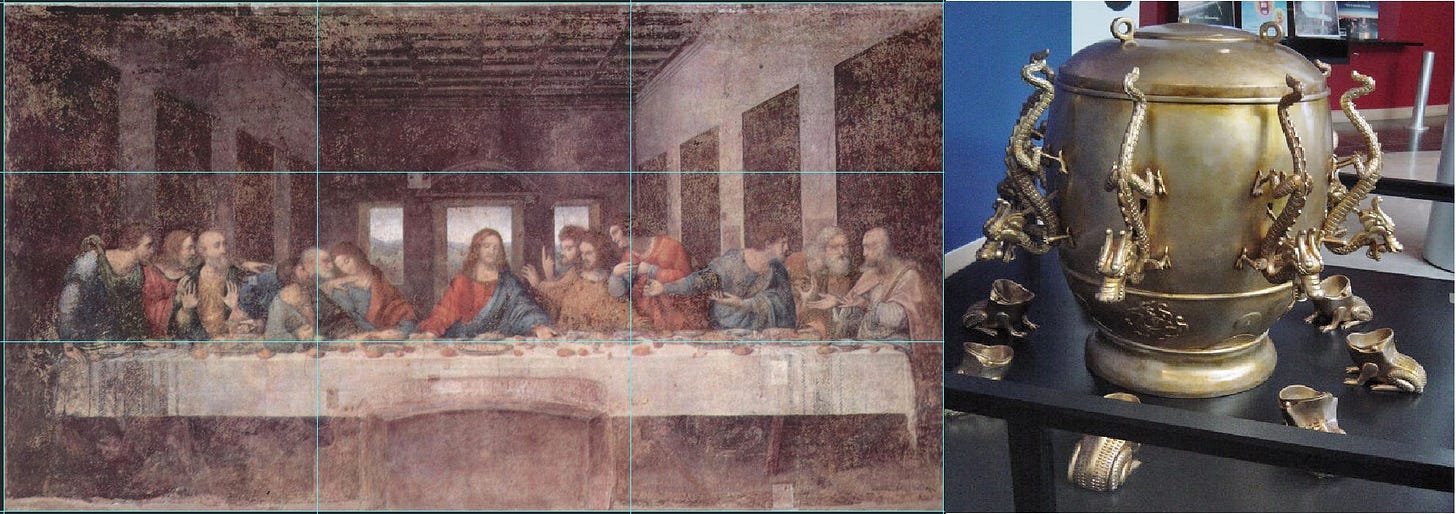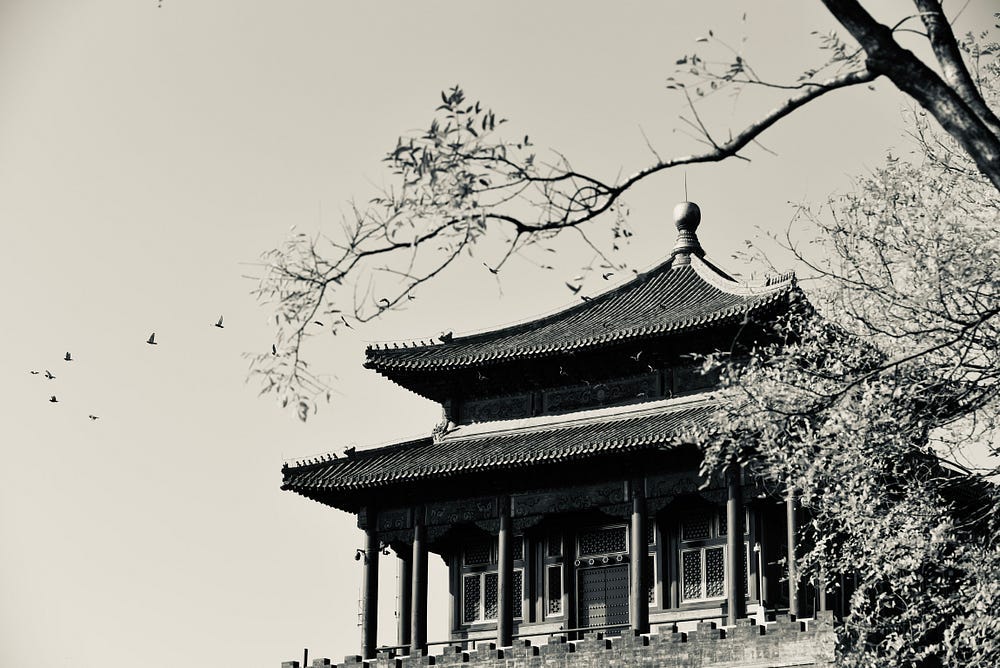The Six Arts: Ancient Chinese Wisdom For Today’s Confusing World
A path to find meaning and purpose in today's empty vacuum
“The six arts were rituals designed to discipline people’s bodies and minds so that they can act suitably in all human situations”
— Intellectuals at a Crossroads: The Changing Politics of China’s Knowledge Workers, Zhidong Hao
What does it mean to be a good human being?
It’s a difficult question. After all, philosophers, politicians, and religions have been trying to answer this since humanity could think. So, obviously there’s no simple reply.
Despite the difficulty, mankind did attempt to answer. Maybe it’s me, but today humanity appears more cynical. Some even question whether one can be a good human being at all. Others reply life itself has no meaning.
Technology adds another layer of complexity. Suddenly flesh and blood are being replaced by machines in epic proportions. Forbes quotes the World Economic Forum as saying 85 million jobs may be lost to automation by 2025.
So, we still have the original unsettled philosophical question, plus the world being turned on its head by technology. It’s a recipe for confusion and depression.
Viktor Frankl wrote about this in depth in Man’s Search For Meaning. In the addendum to his book, he mentions the shape of the new world creates a lack of meaning he called the existential vacuum: a sense of meaninglessness.
He notes that mankind originally had a three-legged stool to stand on which gave us meaning, direction, and purpose.
· Animal instinct
· Tradition
· Work
The first two have been totally displaced, not to mention automation is killing the third. Hence, we lose meaning. You see the repercussions in the form of depression, drug abuse, and the cynicism I mentioned previously.
But it doesn’t have to be this way.
There’s a path back in the form of ancient wisdom called The Six Arts. They’re not an answer on their own, but a road which can answer our original question and help us find meaning along the way in this new confusing age.
What Are The Six Arts?
“A person who masters the Six Arts is considered to be the perfect member of society. Again, the Six Arts embody the Confucian values of ritual, self-discipline, and social etiquette, but on the most basic level, it reflects the Confucian belief that education can foster strong leaders, societies and individuals.” — Iversity.org
The Six Arts were one of the original education methods in ancient China with the purpose of creating excellent well-rounded members of society. It went beyond traditional education. The spiritual and physical were also stressed as well. The six aspects are as follows:
· Rites / Etiquette (礼): Ceremony, community rituals, proper behavior
· Music (乐): Not only the playing of instruments, but music theory
· Archery (射): Traditional physical manipulation of the bow and the spiritual thought processes to hit the target
· Charioteering (御): Combination of mental and physical skills, in addition to command and control of self and mount
· Calligraphy (书): Art, writing, poetry, thinking through a pen
· Arithmetic (数): Higher thought through mathematics and sciences
You’ll notice it’s a very diverse set of skills, which stresses a three-fold set of abilities: physical, mental, and psychological. In a way, it’s the European concept of “Renaissance Man” long before the Renaissance.
Confucius thought so much of it, he made it the core of his teaching between the 6th and 5th century BC.
Not only was it a mixture of art, science, and exercise but combined the militaristic with the creative. In a way it’s a version of Frankl’s three-legged stool. There’s animal instinct, tradition, and elements of work. Plus, higher meaning in the pursuit of excellence by achieving all aspects of a complete person.
I believe it’s what we’re missing today, the cause of our existential vacuum. Moreover, it’s a path to create a good human being.
Translating Chariots And Arrows For Today’s World
Okay, if you’ve started thinking about Googling where you can find a chariot, please stop. It’s not necessary. Neither is a bow and arrow. These were the features of Confucius’ day, but we can bring the practice in modern times by adding our own colors.
For instance, while we can learn much from archery and the mental / physical skills for controlling a chariot, there are other ways to achieve the desired result. Both are militaristic / physical skills. Each requires concentration and physical discipline.
A martial art or physical sport would fit this bill nicely. In fact, the Japanese do this today. Business executives and diligent students close their books — put on armor and pick up wooden swords — to practice the art of kendo.
To outsiders, it looks like two people beating the hell out of each other with wooden sticks. But there’s much more than this. Practitioners say kendo cures the four sicknesses: doubt, fear, confusion and surprise. It also forces concentration on the here and now.
From my 15 years in my own martial art, I find it to be completely true and a vehicle for growth. Furthermore, the Japanese concept of Dō stresses one can become a better person by practicing a physical skill which requires great concentration. In a way it’s meditation through action.
The Other Arts
Rites can be engrossing yourself in the culture of those around you and taking part in either community government or celebration. In other words, less Facebook connections and more human contact.
Music is obvious and easy enough, but it doesn’t require one to practice an instrument. Experiencing different forms in itself can pull you into other worlds. Rap, Country, Classical, Alternative, and Jazz are links into different cultures, artistry, and ways of thinking.
Historian Will Durant in his Story of Philosophy also reminds us Plato recommended music as a good counterbalance to physical disciplines.
I’m sure you’ve heard the phrase “writing is thinking.” Lock yourself in a room with a pen and paper, then write down whatever’s on your mind. You’ll do more thinking in fifteen minutes than in an entire day. Or at least it seems that way with me.
Not to mention poetry and using that same pen to manifest the pictures in your mind into the real world.
Finally, arithmetic can be expanded into the sciences. This is art’s bookend. Where art allows unrestricted creativity, the sciences require proof and function. But a chemistry set isn’t necessary, science documentaries or books can do the trick.
The Six Arts In Practice

Now, this is easy enough for me to say, but where are practical examples of the benefits the Six Arts can produce? You only need to look to the works of three figures — two historical and one presently alive.
1.) Leonardo Da Vinci studied anatomy vigorously, in addition to art, and mathematics. His painting The Last Supper displays a mixing of all three.
He used a mathematical principle called “the rule of thirds” in the painting — laying a grid over the piece to focus certain aspects. As you’ll notice above, the heads all appear in the second grid. The table is relegated to the first.
While the art is obvious, the detail on the bodies was never before seen. Da Vinci’s time dissecting cadavers added to this ability.
2.) Zhang Heng was a combination of mathematician, poet, artist, inventor, astronomer, and government official. He combined all into one device. Heng presented the Han Emperor of China with an earthquake detector in 132 AD (seen above on right).
This artistic jug has a pendulum inside. When the earth rocks, a dragon spits out a ball towards the direction of the earthquake. The emperor could then send help towards the direction of the disaster.
3.) Jocko Willink served with the Navy SEALs for 20 years. During that time he also picked up a degree in literature and later a black belt in Brazilian Jiu-Jitsu (BJJ). He combined all this knowledge in a series of books for adults and kids.
The books for adults often stress leadership qualities he picked up from leading teams in combat. However, the kid’s books usually focus on self-improvement, handling bullies, self-esteem, and dealing with others. He often mixes BJJ and military experience into this.
So, what does it mean to be a good human being?
I can’t answer that. But I’m sure after the path of the Six Arts Da Vinci, Heng, and Willink figured out their own ideas. We likely will as well.
Furthermore, the meaning derived in the undertaking will help fill the existential vacuum Frankl warned of caused by lack of meaning. I also believe it can help us with the repercussions of automation and AI.
If there comes a time when all our jobs are replaced by machines, we’ll still have a mission to undertake in our pursuit of the Six Arts. Plus, what machine could ever replace such a well-rounded and unique life?
-Originally posted on Medium 12/12/21



